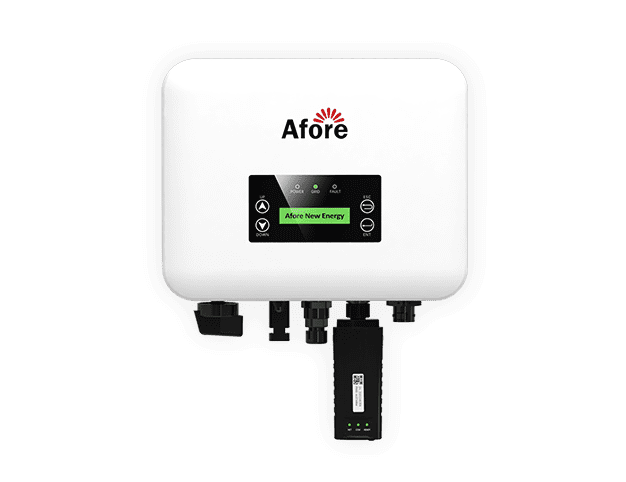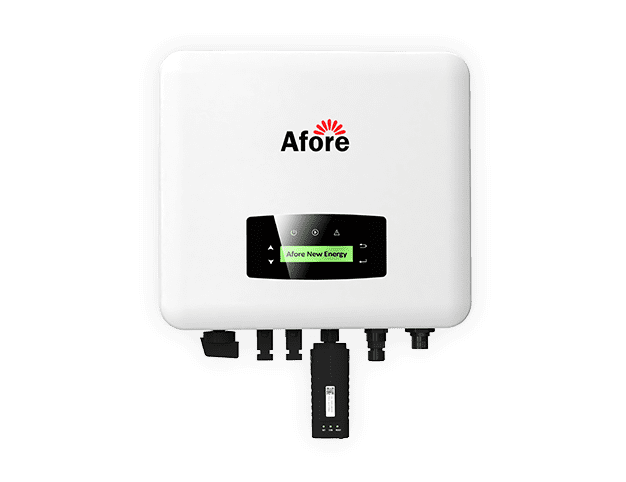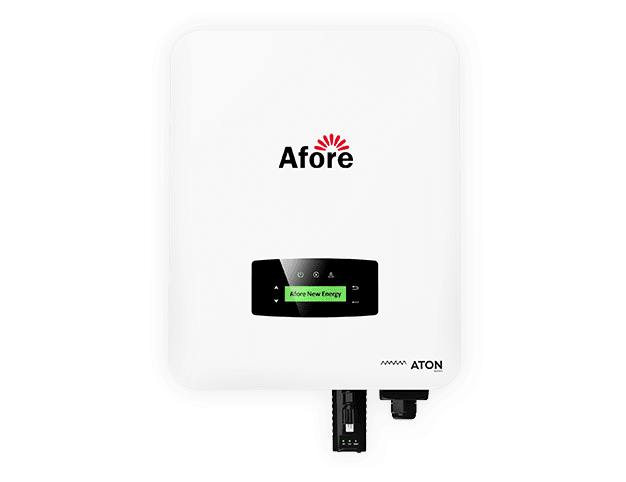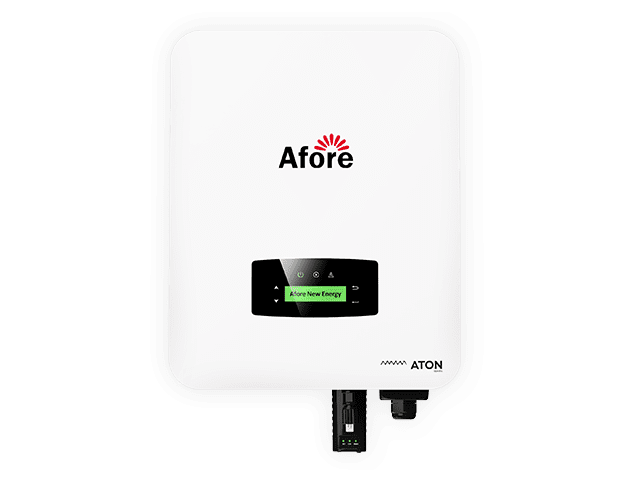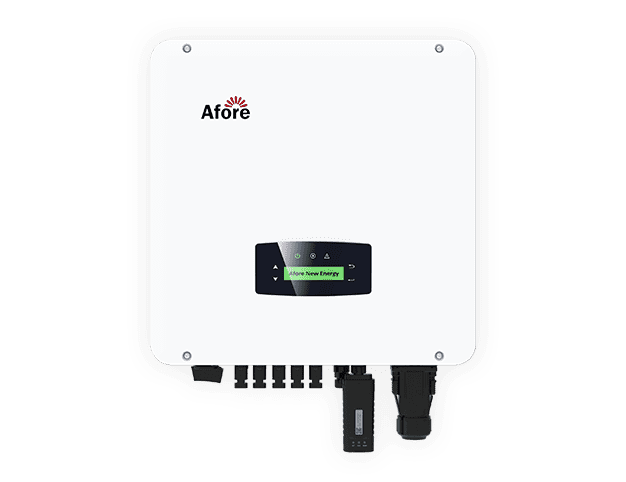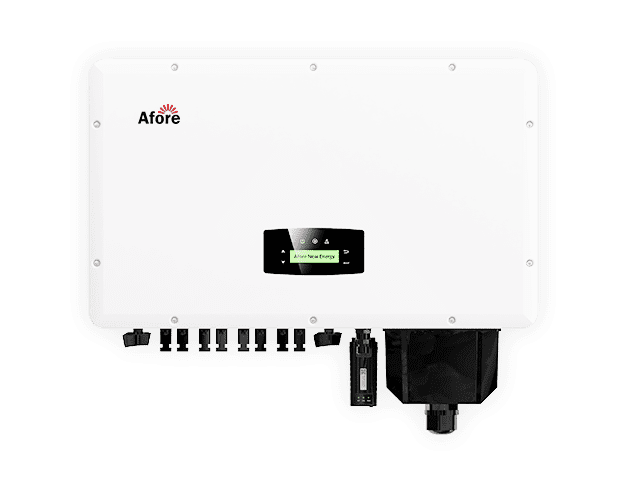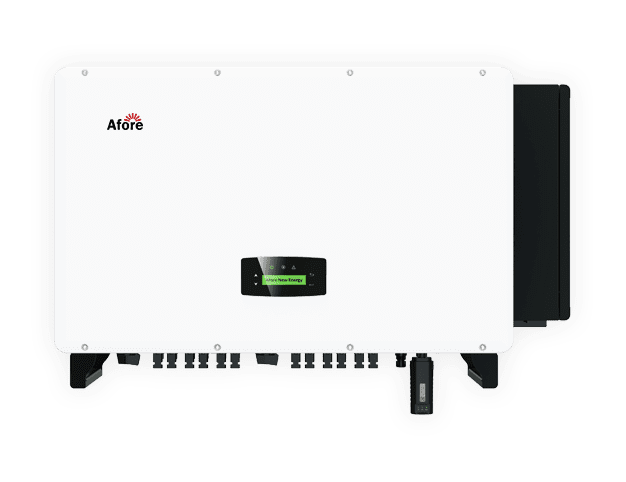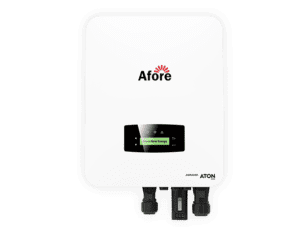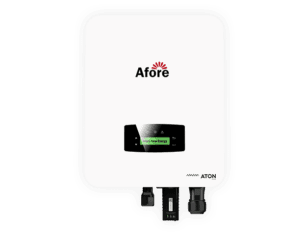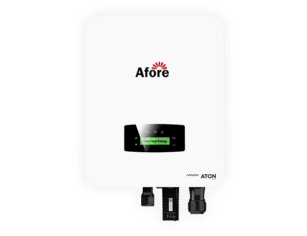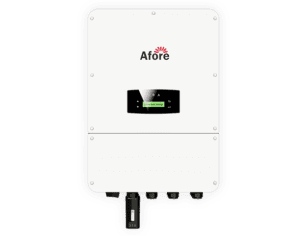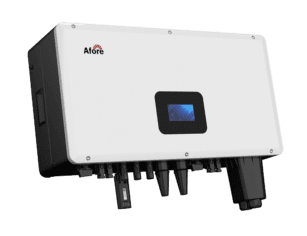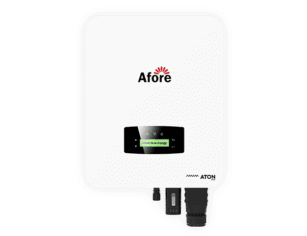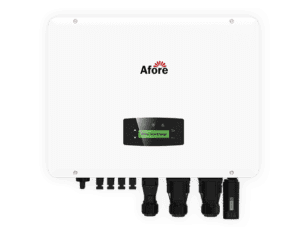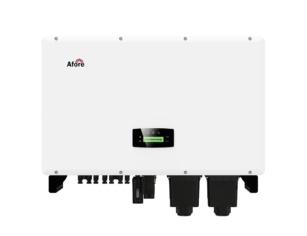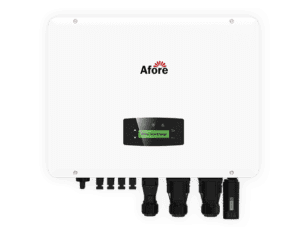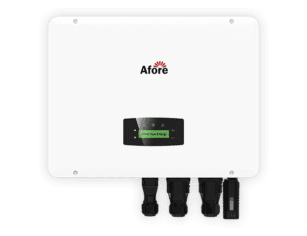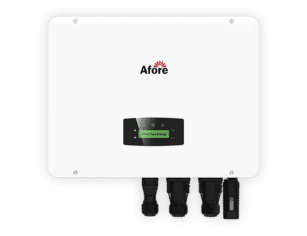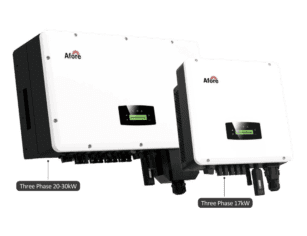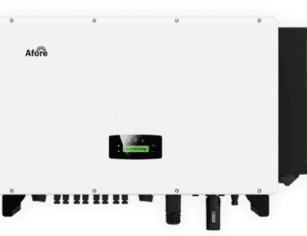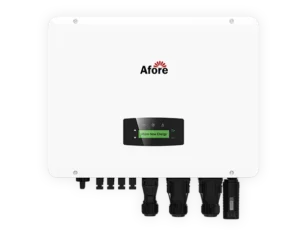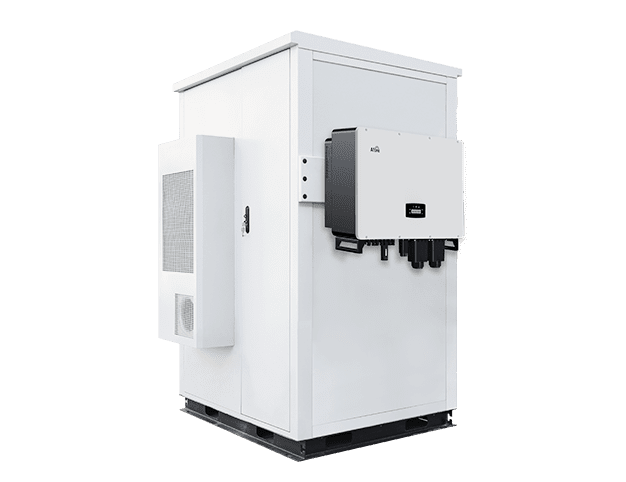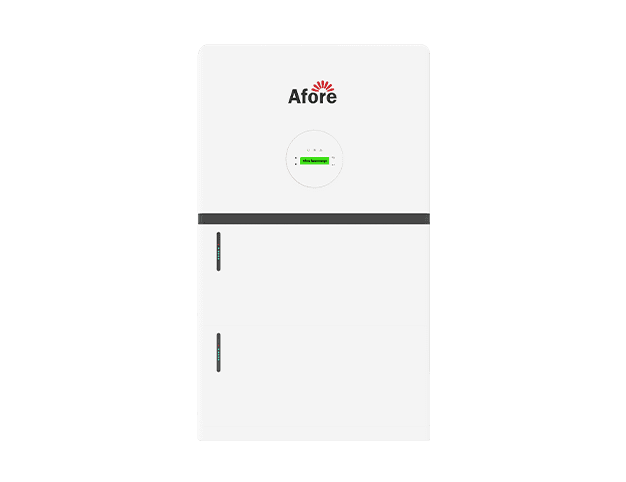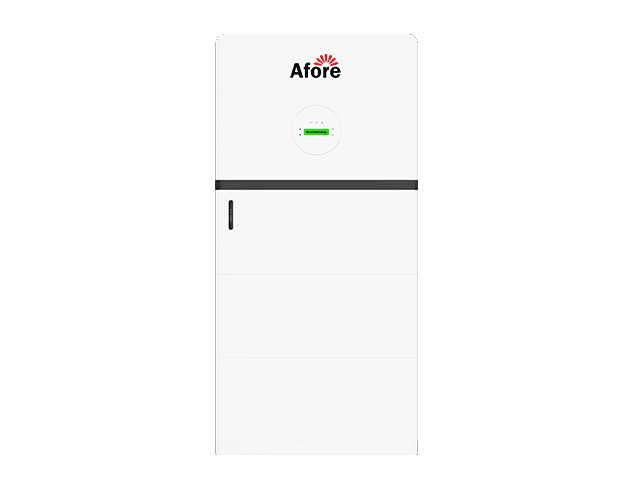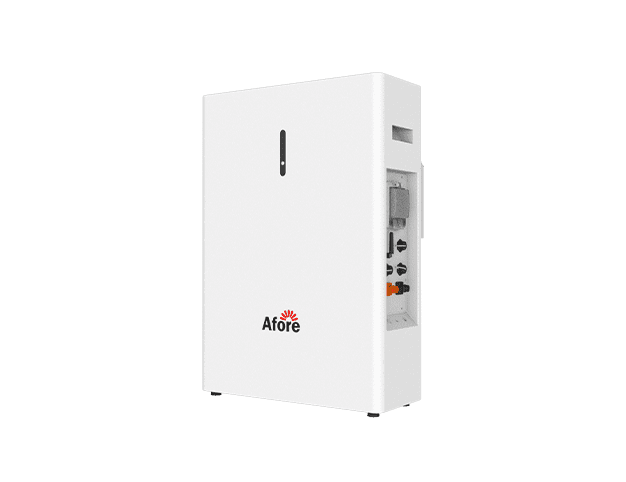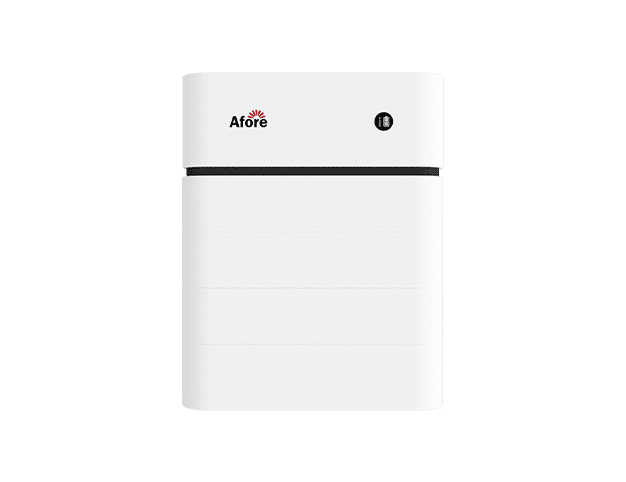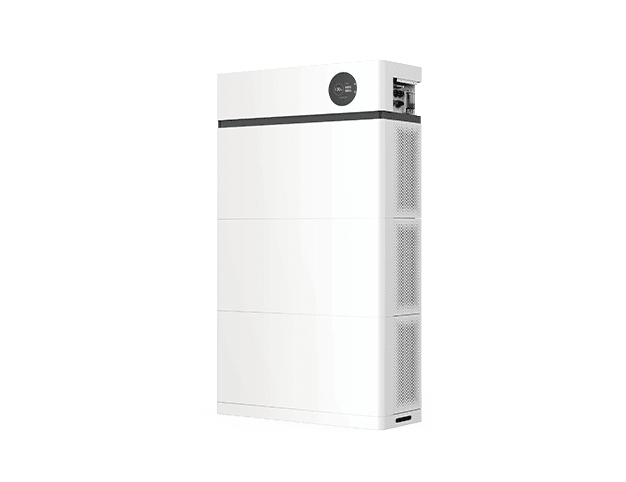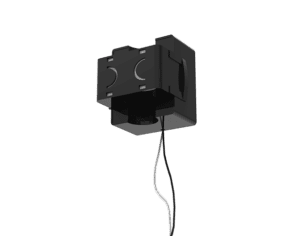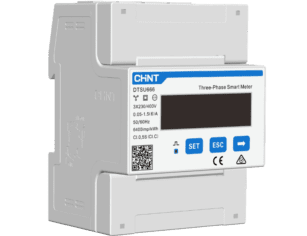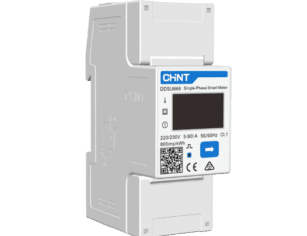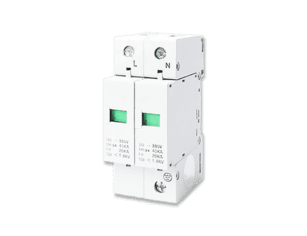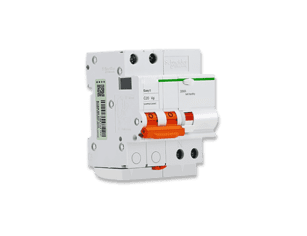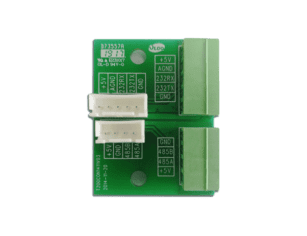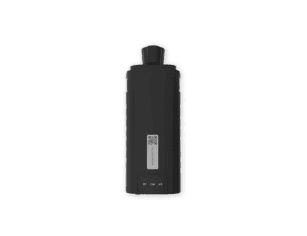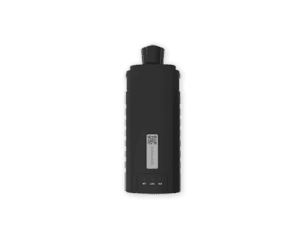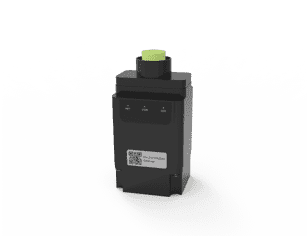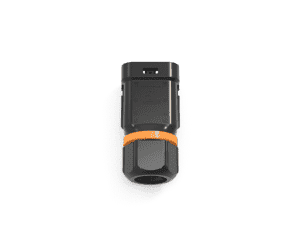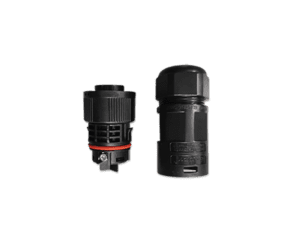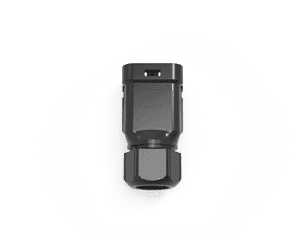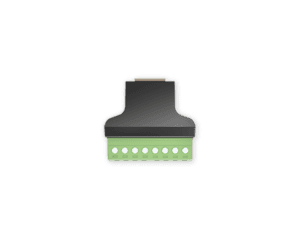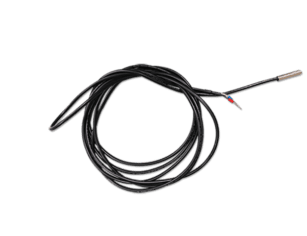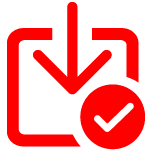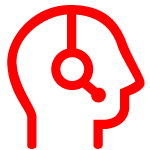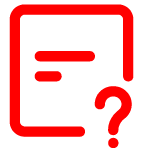Die Technologie von Solarwechselrichtern verstehen: Ein umfassender Leitfaden
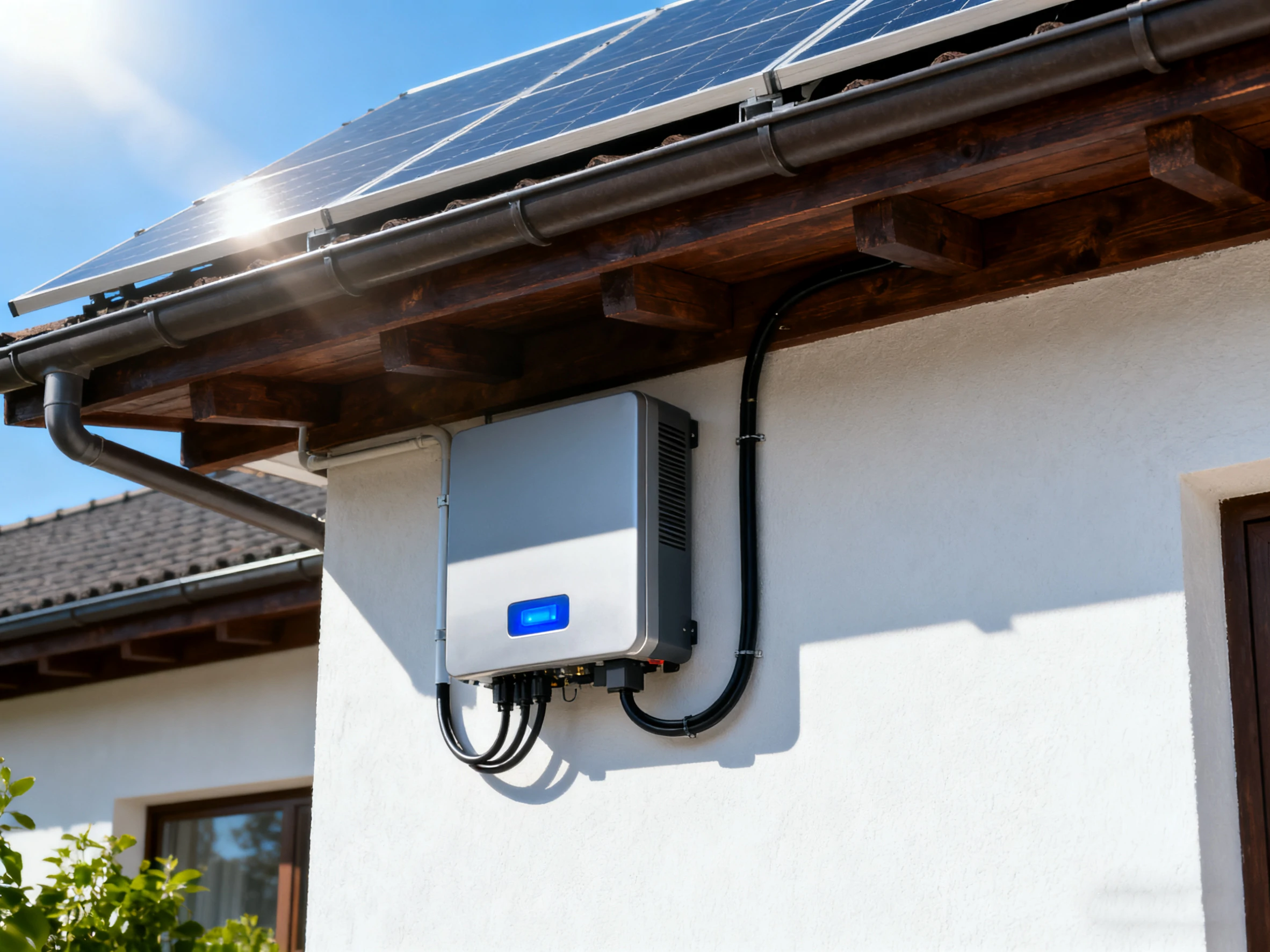
Inhaltsübersicht
Solarenergie ist nicht mehr nur ein futuristisches Konzept - sie ist eine praktische und nachhaltige Lösung für Hausbesitzer und Unternehmen gleichermaßen. Das Herzstück eines jeden effizienten Solarenergiesystems ist die Solarwechselrichtertechnologie, eine entscheidende Komponente, die die von der Sonne eingefangene Energie in Elektrizität umwandelt, die Ihr Haus mit Strom versorgen kann. Um fundierte Entscheidungen über Ihre Solaranlage treffen zu können, müssen Sie die Funktionsweise von Solarwechselrichtern, die verschiedenen verfügbaren Typen sowie deren Vorteile und Einschränkungen kennen. Ganz gleich, ob Sie sich zum ersten Mal mit Solaranlagen befassen oder Ihr System aufrüsten möchten, dieser Leitfaden vermittelt Ihnen das Wissen, das Sie benötigen, um die Energieeffizienz und die langfristigen Einsparungen zu maximieren.
Was ist die Solar-Wechselrichter-Technologie?
Wenn die meisten Menschen an Solarenergie denken, stellen sie sich elegante Paneele vor, die auf den Dächern glitzern und das Sonnenlicht lautlos aufsaugen. Aber was passiert mit dem Sonnenlicht, nachdem es auf die Paneele getroffen ist? Hier kommt die Solarwechselrichtertechnologie ins Spiel. Einfach ausgedrückt ist ein Solarwechselrichter ein Gerät, das den von den Solarmodulen erzeugten Gleichstrom (DC) in Wechselstrom (AC) umwandelt - die Art von Strom, die Ihre Haushaltsgeräte und das Stromnetz tatsächlich nutzen. Ohne diese entscheidende Umwandlung wäre die gesamte von Ihren Solarmodulen erzeugte Energie im Grunde genommen gefangen und für Ihren täglichen Bedarf unbrauchbar.
Moderne Solarwechselrichter wandeln nicht nur Strom um, sondern sind auch das "Gehirn" Ihrer Solarstromanlage. Sie regulieren den Energiefluss, stellen sicher, dass die Spannung für Ihr Haus sicher ist, und optimieren die von Ihren Modulen gewonnene Energiemenge. Moderne Wechselrichter bieten auch Überwachungsfunktionen, die es Hausbesitzern ermöglichen, die Leistung zu verfolgen, Fehler zu erkennen und sogar Batteriespeicher zu verwalten, wenn sie mit Hybridsystemen gekoppelt sind.
Einer der wichtigsten Gründe, warum die Solarwechselrichtertechnologie so wichtig ist, ist ihre Rolle bei der Effizienz und Sicherheit des Systems. Durch die kontinuierliche Anpassung an sich ändernde Sonneneinstrahlungsbedingungen und Netzanforderungen maximiert ein Solarwechselrichter die Energieausbeute und schützt dabei sowohl Ihr Haus als auch die Module selbst. Diese Kombination aus Umwandlung, Regelung und Überwachung macht Solarwechselrichter zu einem unverzichtbaren Bestandteil jeder privaten oder gewerblichen Solaranlage.
Kurz gesagt, die Solarwechselrichtertechnologie macht nicht nur Solarstrom nutzbar, sondern verbessert auch die Leistung, sorgt für Sicherheit und gibt Hausbesitzern Einblicke in ihre Energieproduktion. Das Verständnis dieser Technologie ist der erste Schritt, um das Beste aus Ihrer Solarinvestition zu machen.
Arten von Solarwechselrichtern
Die Auswahl des richtigen Solarwechselrichters ist ein entscheidender Schritt bei der Planung eines Solarenergiesystems, das den Anforderungen Ihres Hauses oder Unternehmens entspricht. Nicht alle Wechselrichter sind gleich, und der von Ihnen gewählte Typ kann die Energieeffizienz, die Komplexität der Installation und die langfristige Leistung beeinflussen. Es gibt drei Haupttypen von Solar-Wechselrichtern: String-Wechselrichter, Mikro-Wechselrichter und Hybrid-Wechselrichter. Jeder Typ bringt seine eigenen Vorteile und Überlegungen mit sich.
String-Wechselrichter
String-Wechselrichter sind der am weitesten verbreitete Typ in privaten Solaranlagen. Bei dieser Konfiguration werden mehrere Solarmodule in Reihe geschaltet und bilden einen "String". Der von dem gesamten String erzeugte Gleichstrom wird in einen einzigen Wechselrichter eingespeist, der ihn in Wechselstrom umwandelt.
Vorteile:
- Kostengünstig: String-Wechselrichter haben in der Regel niedrigere Anschaffungskosten, was sie ideal für preisbewusste Hausbesitzer macht.
- Einfachheit: Installation und Wartung sind einfach, und sie eignen sich gut für unkomplizierte Dachgestaltungen.
Benachteiligungen:
- Leistungsempfindlichkeit: Wenn ein Panel im String verschattet, verschmutzt oder nicht leistungsfähig ist, kann dies die Effizienz des gesamten Strings verringern.
- Begrenzte Überwachung: Bei der Überwachung auf Saitenebene können Probleme mit einzelnen Platten übersehen werden, was die langfristige Leistung beeinträchtigen kann.
Mikro-Wechselrichter
Mikrowechselrichter werden auf jedem einzelnen Solarmodul installiert und wandeln Gleichstrom in Wechselstrom auf der Modulebene um. Auf diese Weise kann jedes Paneel unabhängig arbeiten, was vor allem bei Dächern mit unterschiedlichen Ausrichtungen oder Teilbeschattung von Vorteil ist.
Vorteile:
- Optimierte Energieerzeugung: Da jedes Paneel unabhängig funktioniert, wirken sich Abschattungen oder Probleme mit einem Paneel nicht auf den Rest des Systems aus.
- Verbesserte Überwachung: Mikro-Wechselrichter ermöglichen eine detaillierte Leistungsverfolgung für jedes einzelne Feld.
- Flexibel: Sie erleichtern künftige Systemerweiterungen, ohne dass bestehende Panels beeinträchtigt werden.
Benachteiligungen:
- Höhere Anschaffungskosten: Mikro-Wechselrichter sind aufgrund der zusätzlichen Hardware teurer als String-Wechselrichter.
- Komplexität der Installation: Mehr Komponenten erhöhen die Installationszeit und erfordern qualifizierte Techniker.
Hybrid-Wechselrichter
Hybrid-Wechselrichter, auch Multimode-Wechselrichter genannt, kombinieren die Umwandlung von Solarstrom mit dem Management von Batteriespeichern. Sie können den Strom von den Solarmodulen in Ihr Haus leiten, Batterien aufladen oder überschüssigen Strom in das Netz zurückspeisen.
Vorteile:
- Integration von Energiespeichern: Hybrid-Wechselrichter ermöglichen die Speicherung von Solarenergie für die Zeit, in der kein Sonnenlicht zur Verfügung steht, und erhöhen so den Eigenverbrauch.
- Bereitschaft zur Netzunabhängigkeit: Sie bieten Flexibilität für Haushalte, die eine Notstromversorgung oder teilweise Unabhängigkeit vom Stromnetz wünschen.
Benachteiligungen:
- Höhere Anfangskosten: Die zusätzlichen Funktionen zur Verwaltung von Solar- und Batteriesystemen erhöhen die Anfangsinvestitionen.
- Komplexität: Wartung und Fehlersuche erfordern Spezialwissen, so dass ein professioneller Service unerlässlich ist.
Das Verständnis der Unterschiede zwischen diesen drei Arten von Solarwechselrichtern hilft Hausbesitzern, eine fundierte Entscheidung auf der Grundlage der Dachbedingungen, der Energieanforderungen und der langfristigen Ziele zu treffen. Während String-Wechselrichter aufgrund ihrer Einfachheit und Erschwinglichkeit nach wie vor beliebt sind, bieten Mikro-Wechselrichter und Hybrid-Wechselrichter mehr Flexibilität, Effizienz und Kontrolle für moderne Solaranlagen.
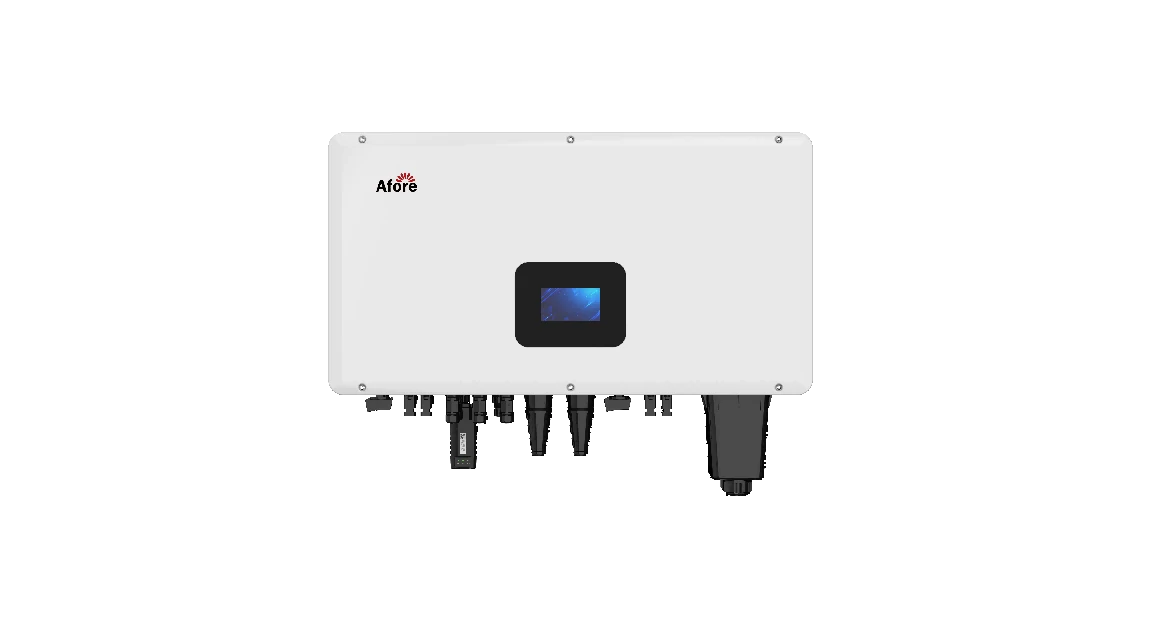
Funktionsweise von Solar-Wechselrichtern
Das Verständnis der Funktionsweise von Solarwechselrichtern ist für jeden, der Solarenergie in Erwägung zieht, unerlässlich. Während Solarmodule das Sonnenlicht einfangen und in Gleichstrom (DC) umwandeln, arbeiten die meisten Haushalte und das Stromnetz mit Wechselstrom (AC). An dieser Stelle wird die Solarwechselrichtertechnologie unverzichtbar. Durch die Umwandlung von Gleichstrom in Wechselstrom macht der Wechselrichter die Energie aus Ihren Modulen für alltägliche Anwendungen nutzbar, vom Betrieb von Lampen und Geräten bis hin zur Rückspeisung in das Stromnetz.
Moderne Solarwechselrichter leisten weit mehr als nur die Umwandlung. Sie optimieren die Energieausbeute, sorgen für Sicherheit und ermöglichen es Hausbesitzern, die Leistung in Echtzeit zu überwachen. Schauen wir uns die wichtigsten Prozesse an, die diese Technologie effizient arbeiten lassen.
Prozess der Energieumwandlung
Ein Solarwechselrichter nimmt im Wesentlichen Gleichstrom von den Solarmodulen auf. Mithilfe fortschrittlicher Elektronik und Energieumwandlungstechniken wandelt er diese Gleichstromenergie in Wechselstrom um. Der Wechselrichter passt sich kontinuierlich den Schwankungen des Sonnenlichts, der Temperatur und der Leistung der Module an, um die gewonnene Energie zu maximieren. Dieser Prozess, der als Maximum Power Point Tracking (MPPT) bezeichnet wird, stellt sicher, dass jedes Modul zu jedem Zeitpunkt die höchstmögliche Leistung erbringt.
Integration mit elektrischen Haussystemen
Nach der Umwandlung fließt der Wechselstrom in das elektrische System Ihres Hauses. Der Wechselrichter synchronisiert die Spannung und Frequenz des Wechselstroms mit dem Netz, um einen sicheren Betrieb zu gewährleisten. Bei Systemen ohne Batterien speist der Wechselrichter überschüssigen Strom in das Netz zurück, so dass Hausbesitzer oft Gutschriften oder Ausgleichszahlungen im Rahmen von Net-Metering-Programmen erhalten können.
Überwachung und Optimierung
Viele moderne Solarwechselrichter sind mit integrierten Überwachungssystemen ausgestattet. Hauseigentümer können die Energieproduktion verfolgen, leistungsschwache Module erkennen und sogar Warnungen erhalten, wenn eine Wartung erforderlich ist. Dieser Einblick ermöglicht ein proaktives Systemmanagement und gewährleistet langfristige Effizienz und Zuverlässigkeit. Einige Wechselrichter unterstützen auch den Fernzugriff über mobile Apps, so dass Sie Ihr Solarsystem von überall aus überwachen können.
Sicherheitsmerkmale
Sicherheit ist ein wichtiger Aspekt der Solarwechselrichtertechnologie. Wechselrichter verfügen über Funktionen wie die Schnellabschaltung, die das System in Notfällen automatisch deaktiviert und sowohl Ihr Haus als auch die Mitarbeiter des Versorgungsunternehmens schützt. Überspannungsschutz und Überspannungsschutz sorgen außerdem dafür, dass Ihr Solarsystem unter allen Bedingungen sicher arbeitet.
Durch die Kombination von Energieumwandlung, Hausintegration, Überwachung und Sicherheit fungieren Solarwechselrichter als zentrales Nervensystem Ihres Solarenergiesystems. Sie machen nicht nur den Solarstrom nutzbar, sondern optimieren auch seine Effizienz, schützen Ihre Investition und liefern wertvolle Erkenntnisse über Ihren Energieverbrauch.
Vorteile der Solarwechselrichtertechnologie
Die Investition in ein Solarenergiesystem ist eine wichtige Entscheidung, und das Verständnis der Vorteile der Solarwechselrichtertechnologie ist der Schlüssel zur Maximierung Ihrer Rendite. Neben der einfachen Umwandlung von Strom spielen Wechselrichter eine entscheidende Rolle für die Energieeffizienz, die Sicherheit und die langfristige Systemleistung. Hier sind die wichtigsten Vorteile, die Solarwechselrichter für jede moderne Solaranlage unverzichtbar machen.
Verbesserte Energieeffizienz
Einer der überzeugendsten Vorteile der Solarwechselrichtertechnologie ist ihre Fähigkeit, die Energieerzeugung zu optimieren. Durch Techniken wie das Maximum Power Point Tracking (MPPT) stellen Wechselrichter sicher, dass die Solarmodule den ganzen Tag über mit höchster Effizienz arbeiten, unabhängig von den Schwankungen des Sonnenlichts. Durch die Minimierung der Energieverluste bei der Umwandlung von Gleichstrom in Wechselstrom können Hausbesitzer jeden Sonnenstrahl optimal nutzen, was sich in einer höheren Stromproduktion und niedrigeren Stromrechnungen niederschlägt.
Verbesserte Sicherheit und Verlässlichkeit
Solar-Wechselrichter erhöhen die Sicherheit Ihrer gesamten Solaranlage. Funktionen wie Schnellabschaltung, Überspannungsschutz und Überspannungsschutz verhindern elektrische Gefahren und schützen sowohl Ihr Haus als auch die Mitarbeiter des Versorgungsunternehmens. Durch die kontinuierliche Überwachung von Spannung, Strom und Temperatur erkennen moderne Wechselrichter auch potenzielle Probleme, bevor sie sich zu schwerwiegenden Störungen entwickeln, und verbessern so die Zuverlässigkeit und Langlebigkeit des Systems.
Überwachung und Kontrolle in Echtzeit
Moderne Solarwechselrichtertechnologie umfasst häufig Überwachungsfunktionen, die Echtzeiteinblicke in die Systemleistung bieten. Hauseigentümer können die Leistung einzelner Module verfolgen, leistungsschwache Einheiten erkennen und Benachrichtigungen für die Wartung erhalten. Dieses Maß an Kontrolle ermöglicht es den Nutzern, ihr Energiesystem proaktiv zu verwalten, eine gleichbleibende Leistung zu gewährleisten und ihre Investition langfristig zu schützen.
Kompatibilität und Flexibilität der Netze
Ein weiterer wichtiger Vorteil von Solarwechselrichtern ist ihre Fähigkeit, sich nahtlos in das Stromnetz zu integrieren. Sie synchronisieren Spannung und Frequenz, so dass überschüssige Energie effizient in das Netz zurückgespeist werden kann. Diese Kompatibilität unterstützt Net-Metering-Programme und ermöglicht es Hausbesitzern, die Abhängigkeit von herkömmlichen Stromquellen zu verringern. Darüber hinaus ermöglichen Hybrid-Wechselrichter die Integration von Batteriespeichern und bieten so die Flexibilität, Energie für den nächtlichen Gebrauch oder bei Stromausfällen zu speichern.
Langfristige Kosteneinsparungen
Durch die Maximierung der Energieproduktion, die Gewährleistung der Systemzuverlässigkeit und die Ermöglichung der Netzinteraktion trägt die Solarwechselrichtertechnologie zu erheblichen langfristigen Kosteneinsparungen bei. Effiziente Wechselrichter reduzieren die Energieverschwendung, senken die Stromrechnungen und verlängern die Lebensdauer Ihrer Solarmodule, indem sie die Spannung regulieren und mögliche Schäden verhindern. Mit der Zeit können diese Vorteile den finanziellen Nutzen Ihrer Solarinvestition erheblich steigern.
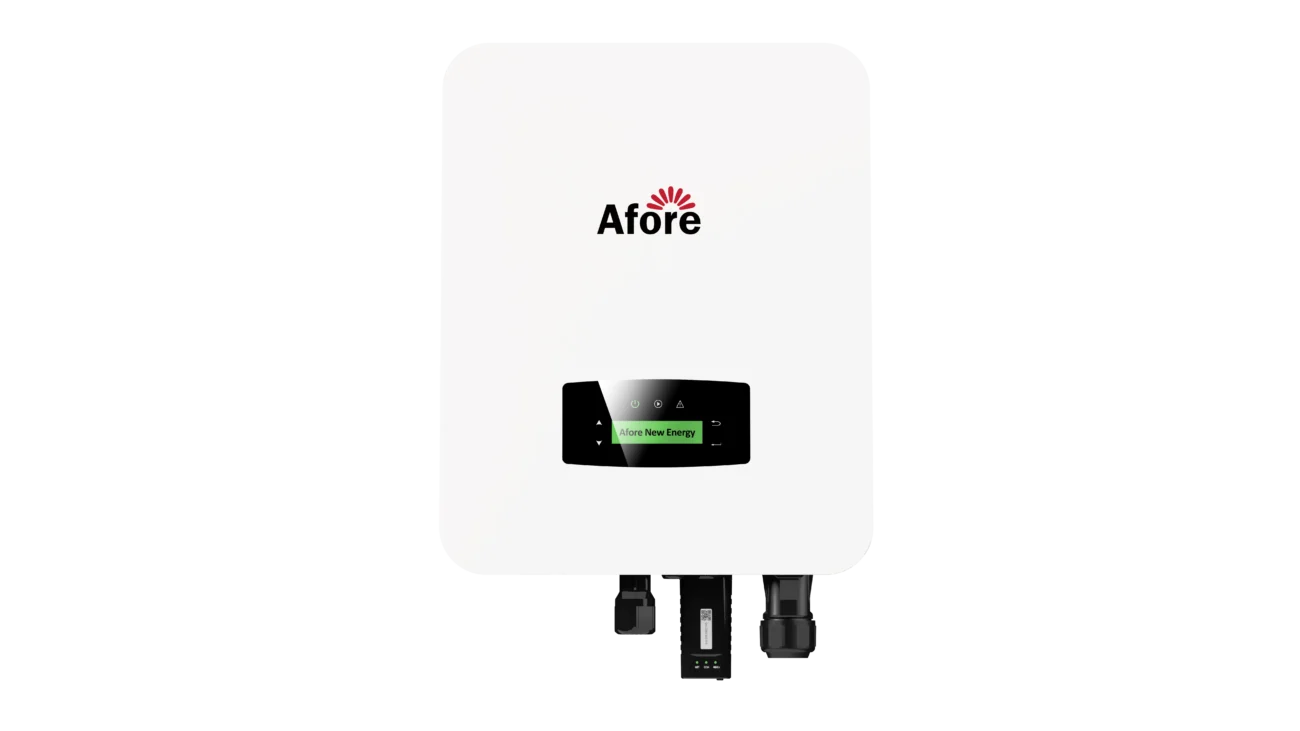
Nachteile der Solarwechselrichtertechnologie
Obwohl die Solarwechselrichtertechnologie zahlreiche Vorteile bietet, ist es für Hausbesitzer wichtig, ihre Grenzen zu kennen, bevor sie in ein Solarsystem investieren. Das Erkennen dieser Nachteile trägt dazu bei, realistische Erwartungen und eine fundierte Entscheidungsfindung bei der Auswahl des richtigen Solarwechselrichters für Ihre Bedürfnisse zu gewährleisten.
Hohe Anfangskosten
Einer der Hauptnachteile von Solarwechselrichtern sind ihre Anschaffungskosten. Hochwertige Wechselrichter, insbesondere Mikrowechselrichter und Hybridwechselrichter, können die Gesamtkosten einer Solaranlage erheblich erhöhen. Obwohl sich die Kosten im Laufe der Zeit durch Energieeinsparungen ausgleichen, kann die Anfangsinvestition ein Hindernis für budgetbewusste Hausbesitzer sein.
Anforderungen an die Wartung
Solarwechselrichter sind komplexe elektronische Geräte, die für einen effizienten Betrieb regelmäßig gewartet werden müssen. Die Komponenten können im Laufe der Zeit durch Hitze, Umweltfaktoren oder elektrische Belastungen beeinträchtigt werden. Regelmäßige Inspektionen, Software-Updates und gelegentliche Reparaturen sind notwendig, um eine optimale Leistung aufrechtzuerhalten und unerwartete Systemausfälle zu vermeiden.
Endliche Lebensspanne
Selbst die langlebigsten Solarwechselrichter haben eine begrenzte Lebensdauer, die in der Regel zwischen 10 und 15 Jahren liegt. Das ist kürzer als die Lebensdauer der meisten Solarmodule, die 25 Jahre oder mehr betragen kann. Hauseigentümer sollten einen eventuellen Austausch des Wechselrichters einplanen, der mit zusätzlichen Kosten und Arbeitsaufwand verbunden ist.
Empfindlichkeit gegenüber Umweltfaktoren
Solar-Wechselrichter können empfindlich auf extreme Temperaturen, Feuchtigkeit und Staub reagieren. Übermäßige Hitze kann die Effizienz verringern, während das Eindringen von Feuchtigkeit oder Stromstöße zu Ausfällen führen können. Eine ordnungsgemäße Installation, Belüftung und ein angemessener Schutz vor Umwelteinflüssen sind unerlässlich, um diese Risiken zu minimieren.
Obsoleszenz der Technologie
Da sich die Solartechnik schnell weiterentwickelt, können ältere Wechselrichter weniger effizient oder mit neueren Solarmodulen und Energiemanagementsystemen nicht mehr kompatibel sein. Eine Aufrüstung auf die neueste Wechselrichtertechnologie kann notwendig sein, um die Spitzenleistung aufrechtzuerhalten und Zugang zu fortschrittlichen Funktionen wie intelligente Überwachung oder erweiterte Netzdienste zu erhalten.
Trotz dieser Nachteile können Hausbesitzer, wenn sie die Grenzen der Solarwechselrichtertechnologie kennen, effektiv planen, den richtigen Wechselrichtertyp auswählen und vorbeugende Maßnahmen ergreifen, um die Zuverlässigkeit und Langlebigkeit des Systems zu maximieren.
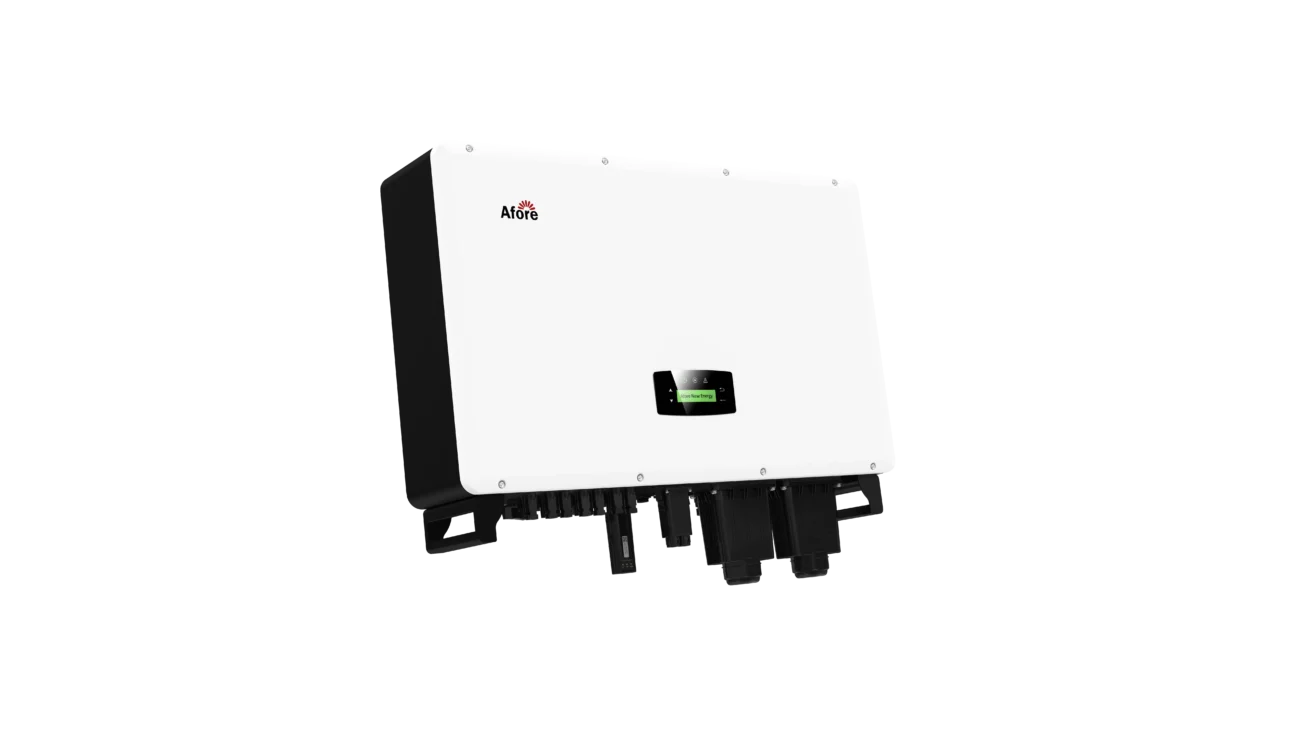
Die Wahl des richtigen Solarwechselrichters für Ihr Haus
Die Auswahl des richtigen Solarwechselrichters ist eine wichtige Entscheidung, die sich direkt auf die Effizienz, Zuverlässigkeit und Gesamtleistung Ihrer Solaranlage auswirken kann. Der richtige Wechselrichter sorgt dafür, dass Sie die Energieproduktion maximieren, die Sicherheit aufrechterhalten und langfristige Einsparungen erzielen. Hier finden Sie einen umfassenden Leitfaden, der Hausbesitzern hilft, eine fundierte Entscheidung zu treffen.
Beurteilung der Dachgestaltung und Beschattung
Die Ausrichtung, Neigung und Beschattung Ihres Daches spielen eine wichtige Rolle bei der Entscheidung, welche Solarwechselrichtertechnologie am besten geeignet ist. Für Dächer mit gleichmäßiger Sonneneinstrahlung sind String-Wechselrichter in der Regel ausreichend. Weist Ihr Dach jedoch mehrere Winkel oder Teilabschattungen durch Bäume oder nahe gelegene Strukturen auf, sind Mikro-Wechselrichter oder Hybridsysteme oft die bessere Wahl. Mit diesen Wechselrichtern kann jedes einzelne Modul unabhängig arbeiten, so dass eine gleichmäßige Energieerzeugung trotz unterschiedlicher Sonneneinstrahlung gewährleistet ist.
Bewertung des Energiebedarfs
Bei der Auswahl eines Solarwechselrichters ist es wichtig, den Stromverbrauch Ihres Haushalts zu kennen. Haushalte mit hohem Energiebedarf benötigen möglicherweise Wechselrichter mit größerer Kapazität oder Hybridsysteme, die einen Batteriespeicher integrieren können. Für kleinere Haushalte mit bescheidenem Energiebedarf hingegen sind String-Wechselrichter möglicherweise die kostengünstigste und effizienteste Lösung. Eine genaue Schätzung Ihres Energieverbrauchs hilft, eine Über- oder Unterdimensionierung Ihres Wechselrichters zu vermeiden, was sich sowohl auf die Leistung als auch auf die Kosteneinsparungen auswirken kann.
Überlegungen zum Budget
Da die Kosten für Solarwechselrichter sehr unterschiedlich sein können, ist es wichtig, die Anfangsinvestitionen mit den langfristigen Vorteilen abzuwägen. String-Wechselrichter sind erschwinglich, Mikro-Wechselrichter bieten einen höheren Wirkungsgrad und mehr Flexibilität, und Hybrid-Wechselrichter bieten Energiespeicherfunktionen. Durch Abwägen der Anschaffungskosten gegen die potenziellen Energieeinsparungen, Förderungen und die Langlebigkeit des Systems können Hausbesitzer den Wechselrichter auswählen, der den besten Gesamtwert bietet.
Planung für zukünftige Expansion
Wenn Sie Ihr Solarsystem in Zukunft erweitern möchten, sollten Sie einen Wechselrichter wählen, der die Skalierbarkeit unterstützt. Mit Mikro-Wechselrichtern und einigen Hybrid-Wechselrichtern können zusätzliche Module hinzugefügt werden, ohne dass der vorhandene Wechselrichter ausgetauscht werden muss, was Flexibilität bietet und die zukünftigen Installationskosten minimiert. Die Planung von Erweiterungen stellt sicher, dass Ihre Solarinvestition an den sich ändernden Energiebedarf oder die sich weiterentwickelnde Technologie angepasst werden kann.
Beratung mit Fachleuten
Schließlich ist die Beratung durch zertifizierte Solarinstallateure und Energieexperten von entscheidender Bedeutung. Sie können Ihr Dach, Ihren Energiebedarf und die örtlichen Vorschriften beurteilen, um die am besten geeignete Solarwechselrichtertechnologie für Ihr Haus zu empfehlen. Eine professionelle Beratung stellt sicher, dass Ihr System hinsichtlich Effizienz, Sicherheit und langfristiger Leistung optimiert ist.
Unter sorgfältiger Berücksichtigung der Dachbedingungen, des Energieverbrauchs, des Budgets, der Erweiterungspläne und professioneller Beratung können Hausbesitzer den richtigen Solarwechselrichter auswählen, der die Vorteile ihrer Solaranlage maximiert und gleichzeitig Sicherheit und Zuverlässigkeit gewährleistet.
Schlussfolgerung
Solarwechselrichter Technologie ist eine entscheidende Komponente jeder Solaranlage. Das Wissen um die verschiedenen Arten von Wechselrichtern und ihre Funktionen kann Hausbesitzern helfen, fundierte Entscheidungen über ihre Solaranlagen zu treffen. Wenn Sie Faktoren wie Dachkonfiguration, Energiebedarf und Budget berücksichtigen, können Sie den am besten geeigneten Wechselrichter auswählen, um die Vorteile der Solarenergie zu maximieren.
Da sich die Solarbranche ständig weiterentwickelt, ist es wichtig, über die Fortschritte in der Wechselrichtertechnologie auf dem Laufenden zu bleiben, um sicherzustellen, dass Ihr Solarsystem effizient, zuverlässig und zukunftssicher bleibt.
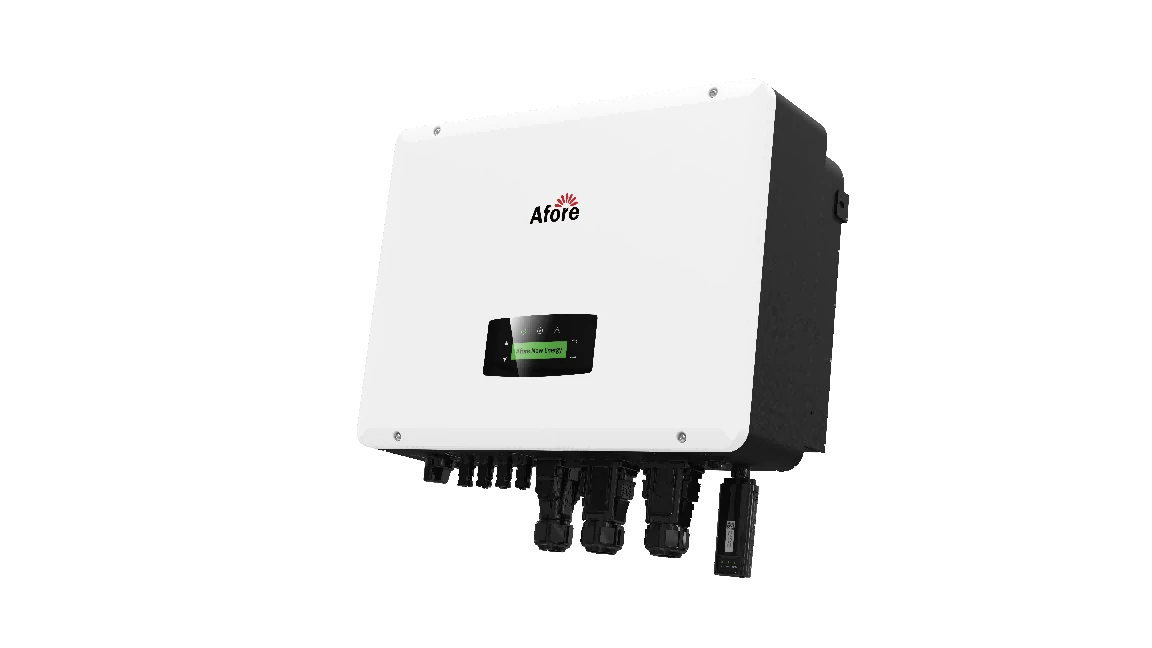
Häufig gestellte Fragen
Was ist die Technologie der Solarwechselrichter?
Solarwechselrichter sind Geräte, die den von Solarmodulen erzeugten Gleichstrom (DC) in Wechselstrom (AC) umwandeln, der mit Haushaltsgeräten und dem Stromnetz kompatibel ist. Neben der Umwandlung optimieren moderne Wechselrichter die Energieausbeute, überwachen die Systemleistung und sorgen für Sicherheit.
Welche drei Arten von Solarwechselrichtern gibt es?
Die drei Haupttypen sind:
- String-Wechselrichter: Zentralisierte Einheiten, die Gleichstrom von einer Reihe von Modulen umwandeln.
- Mikro-Wechselrichter: Werden auf jedem Panel installiert und ermöglichen einen unabhängigen Betrieb.
- Hybrid-Wechselrichter: Kombinieren Solarumwandlung mit Batteriespeichermanagement. Jeder Typ hat Vorteile, je nach Dachgestaltung, Beschattung und Energiebedarf.
Was sind die Nachteile eines Solarwechselrichters?
Zu den Nachteilen gehören die hohen Anschaffungskosten, der Wartungsaufwand, die begrenzte Lebensdauer (in der Regel 10-15 Jahre), die Empfindlichkeit gegenüber Umweltbedingungen und die mögliche Veralterung der Technologie. Durch die richtige Auswahl und Wartung können viele dieser Probleme gemildert werden.
Welcher Wechselrichtertyp eignet sich am besten für Solaranlagen?
Der "beste" Solarwechselrichter hängt von Ihrem Haus und Ihren Energiezielen ab. String-Wechselrichter sind kosteneffizient für einfache Installationen, Mikro-Wechselrichter eignen sich hervorragend für schattige oder komplexe Dächer, und Hybrid-Wechselrichter sind ideal für Systeme, die einen Batteriespeicher integrieren oder eine netzunabhängige Versorgung planen.
Wie lange halten Solar-Wechselrichter?
Die meisten Solar-Wechselrichter halten zwischen 10 und 15 Jahren. Die Lebensdauer variiert je nach Typ, Qualität und Umgebungsbedingungen. Hochwertige Mikro-Wechselrichter und Hybrid-Wechselrichter bieten unter Umständen längere Garantien und eine längere Betriebsdauer.
Können Solar-Wechselrichter netzunabhängig betrieben werden?
Ja, Hybrid-Wechselrichter können sowohl Solarmodule als auch Batterien verwalten, so dass Häuser teilweise oder vollständig netzunabhängig betrieben werden können. Diese Flexibilität bietet eine Notstromversorgung bei Stromausfällen und ermöglicht Energieunabhängigkeit.
Müssen Wechselrichter regelmäßig gewartet werden?
Auf jeden Fall. Regelmäßige Inspektionen, Reinigung und gelegentliche Software-Updates tragen dazu bei, die optimale Leistung zu erhalten und Ausfälle zu vermeiden. Die Vernachlässigung der Wartung kann die Effizienz verringern und die Lebensdauer des Wechselrichters verkürzen.
Wie gehen die Wechselrichter mit Verschattungsproblemen um?
Mikro-Wechselrichter sind besonders effektiv bei verschatteten Dächern, da jedes Modul unabhängig arbeitet. Dadurch wird sichergestellt, dass die Beschattung eines einzelnen Moduls die Leistung des gesamten Systems nicht wesentlich beeinträchtigt.
Gibt es Anreize für die Installation von Solarwechselrichtern?
Viele Regionen bieten Anreize, Steuergutschriften oder Rabatte für die Installation von Solarsystemen, einschließlich Wechselrichtern. Diese Programme können die Anfangskosten senken und die Amortisationszeit für Hausbesitzer, die in Solarenergie investieren, beschleunigen.
Kann ich meinen Wechselrichter später aufrüsten?
Ja. Einige Systeme, insbesondere solche mit Mikro-Wechselrichtern oder modularen Hybrid-Wechselrichtern, lassen sich aufrüsten, um die Kapazität zu erhöhen, Überwachungsfunktionen hinzuzufügen oder die Effizienz zu verbessern, ohne dass das gesamte System ersetzt werden muss.
Wie verbessern Solar-Wechselrichter die Energieeffizienz?
Durch die kontinuierliche Überwachung der maximalen Leistungsabgabe und die effiziente Umwandlung von Gleichstrom in Wechselstrom verringern Solarwechselrichter Energieverluste und stellen sicher, dass jedes Solarmodul so viel Strom wie möglich in Ihr Haus oder das Netz einspeist.
Können Wechselrichter mit Batteriespeichern integriert werden?
Ja, Hybrid-Wechselrichter sind speziell dafür ausgelegt, Solarstrom zusammen mit Batteriespeichern zu verwalten. Sie regulieren die Lade- und Entladevorgänge, maximieren den Eigenverbrauch und liefern bei Stromausfällen eine Notstromversorgung.




